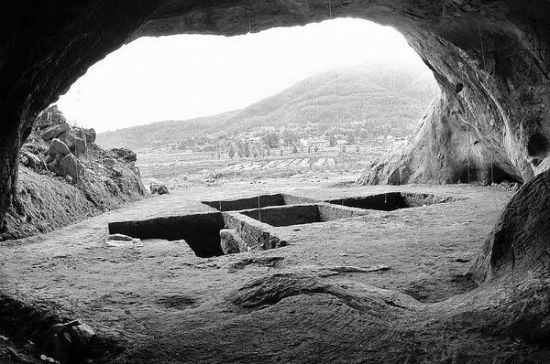New blueprint for field archaeology

The Excavation of the Nanshan Site in Mingxi county, Fujian Province, is an important discovery for prehistoric archaeology.
At the Chinese Academy of Social Sciences (CASS) annual meeting on field archaeology held recently, representatives reviewed major achievements of the past few years and laid out a plan for field archaeology over the next five years.
The year 2016 marks the beginning of the 13th Five-Year Plan. CASS will gather professionals to prepare for field excavations focused on such issues as the transition from the Paleolithic Age to the Neolithic Age, the origination and spread of agriculture, and China’s cultural exchanges with other countries, in particular concerning the ancient Silk Road, said Wang Wei, director of the Institute of Archaeology at CASS.
Prehistoric archaeology
Over the past few years, archaeologists in southeast China sorted out the preliminary prehistoric cultural ancestry of Hainan Island. They also found the Nanshan Site and Yanzi Cave Site, which were the most important discoveries for prehistoric archaeology in Fujian Province found in recent years. These two projects will be further expedited during the next five years.
Meanwhile, archaeologists in Shandong Province will go on prospecting and excavating the ruins of the Yao Royal City in Rizhao which has been confirmed to have been built during the Longshan Culture of the late Dawenkou culture (4100-2600 BC).
In Shaanxi Province, the excavation of the fourth spot in the Longwangchan Site helped archaeologists find the cultural layer of the late Paleolithic Age, which is of great research value for the transition to the Neolithic Age along the midstream of the Yellow River.
Besides, a joint team staffed by archaeologists from CASS and Gansu Province excavated the Majiayao Site for the second time. Building and tomb sites as well as a large number of relics found in the excavation enriched knowledge of the different periods of the site.
Further development
Recent years have witnessed the archaeological breakthroughs of various sites in Erlitou, Fengjing and Zhouyuan. During the 13th Five-Year Plan, emphasis will be laid on the layout of city wall and building complex of the Taosi Site, geographical information system of the Erlitou Site as well as reports and publications on the excavation of the Yanshi City Site of the Shang Dynasty.
Settlement archaeology will be the focus of the Fenggao Site in Shaanxi Province including the layout of the manufacturing workshop and water system. Further expeditions will start in its unexcavated area. Archaeologists in middle China will continue their work on the Huanbei City Site and the layout of the Yinxu Site.
Excavation of Han, Tang dynasties
Branches of the Research Office of Han and Tang dynasties have excavated various major sites.
In Shaanxi Province, Han City Ruins in Xi’an have provided valuable materials for Han gardens and buildings. Investigation and excavations of the Ming Palace, the Xingqing Palace and the Forbidden Gardens will be carried out.
Archaeologists in Yunnan Province found the Dayuanzi Tomb in Shizong County, which is crucial to research on bronze culture and the tribal distribution of the aborigines in the border areas of Yunnan and Guizhou provinces during the Warring States Period (475-221 BC). The future work is to find the sites of settlements and the ruins of Han culture.
The Institute of Archaeology at CASS is the leading architectural authority in China. As a primary academic consultant, it plays a key role in the examination and approval of archaeological excavations, establishment of major projects, and protection of huge archaeological sites, said Song Xinchao, deputy director of the State Administration of Cultural Heritage.
In the next period, the institute will shoulder more social responsibility and follow international academic frontiers. Meanwhile, it will continue to lead the field and international communication in an effort to improve the disciplinary layout, Song said.
Yang Yang, She Kao are reporters at the Chinese Social Sciences Today.

 PRINT
PRINT CLOSE
CLOSE